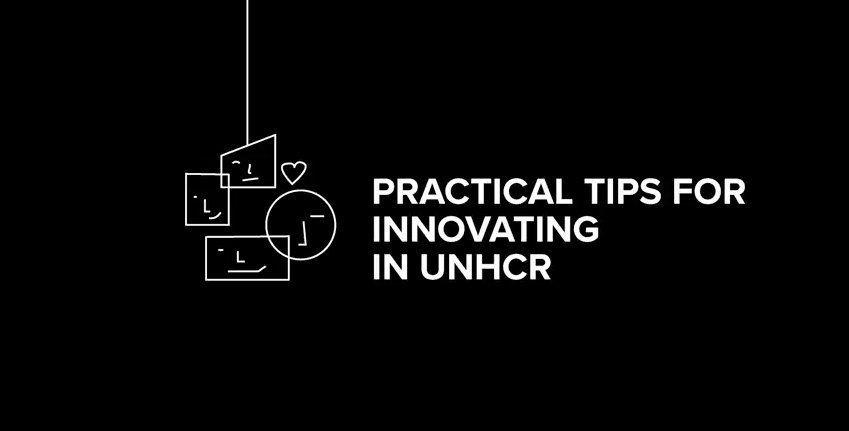The word innovation is ubiquitous and confusing to most. We’d use a different word if we could. So what are the first steps for including innovation into your day-to-day work at UNHCR? And what does it actually look like in practice?
It’s easier than you might think.
We’ve outlined practical applications of the innovation process to help get you started. Try to innovate how you innovate, whether that’s in your team, division, or entire operation. Employ some of the practical tips in this list and other ideas found throughout this publication. If you still have questions – drop us an email.
Be brave.
Innovation is not an easy process but it is worth it. You will have to iterate and fail along the way – but use it as an opportunity to learn. Take the risk to try something new and it will pay off dividends in the end.
Ask the right question.
You won’t get an appropriate solution if you’re not asking the right question. Defining your challenge is a crucial step in the innovation process. Keep it short and make sure it only contains one challenge. You can continue to tweak your challenge question until you’ve identified the right problem.
Engage refugees.
Refugees are better at knowing what works for them and what doesn’t. They are great innovators and full of their own ideas. Ask refugees for their feedback throughout the process – but explore opportunities to empower them as innovators themselves.
Ideate.
Take advantage of other people’s creativity and facilitate a brainstorming session with your team members, colleagues, and refugees to create new ideas. Invite people with a wide range of disciplines. Crazy ideas are welcomed and should be built upon.
Experiment.
Innovation is never about silver bullets. Learn by doing. Try new things. Keep testing your original idea or process. Discover what works and what doesn’t. Then experiment again.
Challenge your assumptions.
Everytime we approach a problem, we bring assumptions that limit our ability to think about new solutions. Think critically about the assumptions underlying your innovation and then test them in a systematic way.
Collaborate.
Work with other divisions, bureaux, external companies, academia, and others during the innovation process. Choose a partner with different skills and ideas. Go outside the usual suspects. Be flexible and open to different types of collaboration.
Embrace failure.
Acknowledging that failure happens to the best of us, and using that opportunity to build the skills needed to learn from one’s mistakes is key.
Copy someone else’s idea.
When is innovation simply imitation? Often. Look at promising practices that already exists elsewhere and apply it to your operation and context.
Launch a UNHCR Innovation Challenge.
Ask UNHCR staff and members of the public to suggest great new ideas. Offer a prize or an incentive. Give people a clear focussed goal and they will surprise you with novel ideas.
Innovate with everyone.
Include targets for innovation within your team, division or operation. Measure these targets and the impact you’ve had. Don’t just have one innovation focal point – include innovation into everyone’s objectives. Before you realize it, everyone will be a champion of innovation.
We’re always looking for great stories, ideas, and opinions on innovations that are led by or create impact for refugees. If you have one to share with us send us an email at [email protected]
If you’d like to repost this article on your website, please see our reposting policy.

